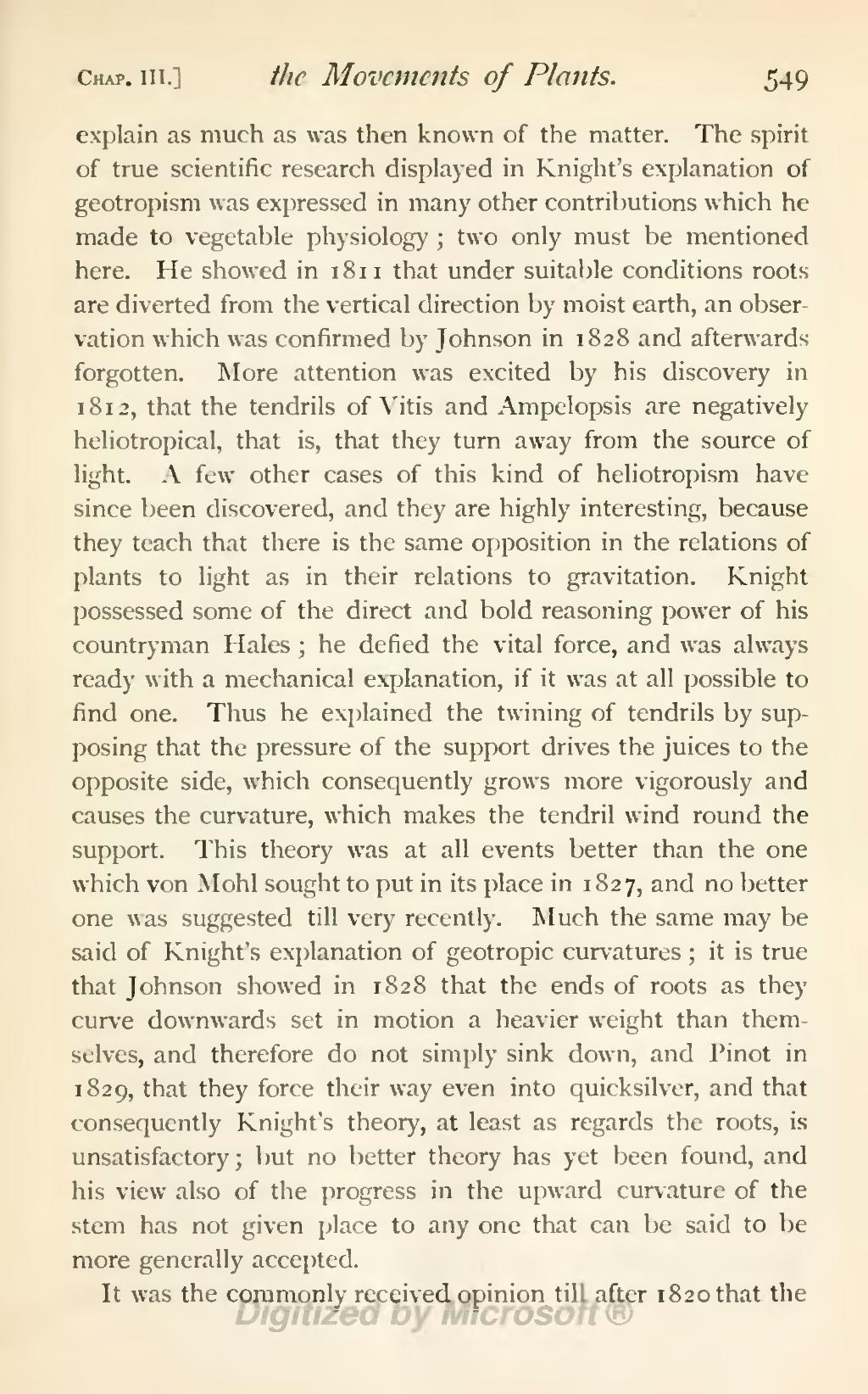explain as much as was then known of the matter. The spirit of true scientific research displayed in Knight's explanation of geotropism was expressed in many other contributions which he made to vegetable physiology; two only must be mentioned here. He showed in 1811 that under suitable conditions roots are diverted from the vertical direction by moist earth, an observation which was confirmed by Johnson in 1828 and afterwards forgotten. More attention was excited by his discovery in 1812, that the tendrils of Vitis and Ampelopsis are negatively heliotropical, that is, that they turn away from the source of light. A few other cases of this kind of heliotropism have since been discovered, and they are highly interesting, because they teach that there is the same opposition in the relations of plants to light as in their relations to gravitation. Knight possessed some of the direct and bold reasoning power of his countryman Hales; he defied the vital force, and was always ready with a mechanical explanation, if it was at all possible to find one. Thus he explained the twining of tendrils by supposing that the pressure of the support drives the juices to the opposite side, which consequently grows more vigorously and causes the curvature, which makes the tendril wind round the support. This theory was at all events better than the one which von Mohl sought to put in its place in 1827, and no better one was suggested till very recently. Much the same may be said of Knight's explanation of geotropic curvatures; it is true that Johnson showed in 1828 that the ends of roots as they curve downwards set in motion a heavier weight than themselves, and therefore do not simply sink down, and Pinot in 1829, that they force their way even into quicksilver, and that consequently Knight's theory, at least as regards the roots, is unsatisfactory; but no better theory has yet been found, and his view also of the progress in the upward curvature of the stem has not given place to any one that can be said to be more generally accepted.
It was the commonly received opinion till after 1820 that the
